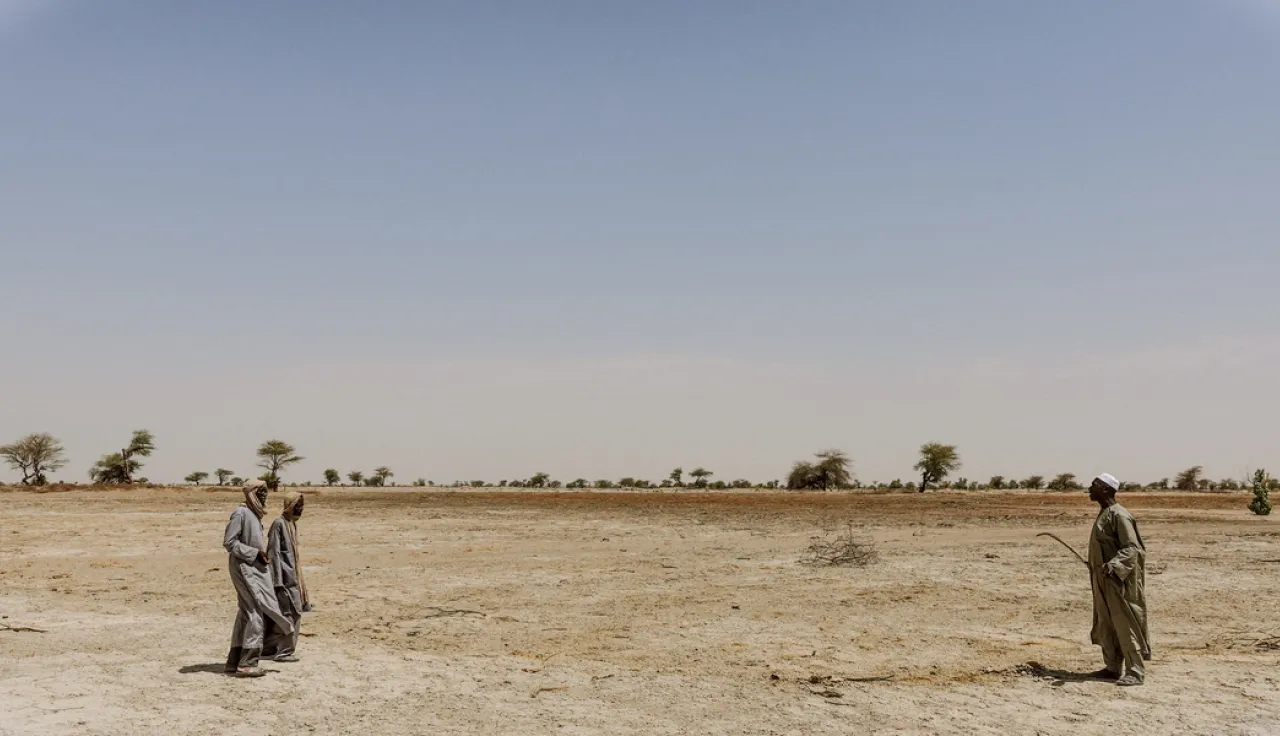COP26 – Three calls to strengthen climate action in conflict zones

The climate crisis threatens the survival of humanity. Major political efforts are required to mitigate climate change to avert the most disastrous consequences.
But even if ambitious mitigation measures are implemented, climate disruption will continue to severely affect people’s lives for several generations.
Scaling-up climate adaptation is therefore equally essential to limit the humanitarian impacts of climate change
Countries enduring conflict are among the most vulnerable to the climate crisis. Every day the ICRC sees how climate change and conflict interact to amplify humanitarian needs and weaken essential services.
COP26 – the United Nations climate change conference – is taking place in Glasgow between 31 October and 12 November.
During these two weeks, the ICRC will be advocating to strengthen climate action in places affected by conflict.
The ICRC is seeking three main commitments to ensure that countries enduring conflict do not continue to be neglected by climate action and finance. A summary:
1. Acknowledge that countries enduring conflict are highly vulnerable to climate risks due to their limited adaptive capacity – this recognition is critical to scale up climate action in such places.
Of the 25 states deemed most vulnerable and least ready to adapt to climate change, 14 are mired in conflict. This is not because climate change directly causes conflict.
Rather, climate change amplifies the humanitarian needs triggered by conflict, while conflict increases the fragility of institutions, essential services, infrastructure and governance that are critical to helping people cope and adapt to a changing climate.
2. Live up to the commitment to bolster climate action in countries identified by parties to the UNFCCC (United Nations Framework Convention on Climate Change) as particularly vulnerable to climate change by scaling up support to countries enduring conflict.
Many countries affected by conflict need to urgently strengthen their populations’ ability to adapt to growing climate risks and changes to the natural environment caused by climate change.
Yet, they commonly have a limited capacity to do so on their own. Despite their clear vulnerability to climate risks, support for their climate adaptation is particularly weak because of the uncertainty attached to financing and programming in these locations.
3. Ensure that climate action in countries affected by conflict is adequately supported by fit-for-purpose climate finance.
Two critical imbalances characterize climate finance and severely limit the potential for adequate climate action in fragile and conflict-affected countries.
First, there is a significant disparity between the provision of funding to stable middle-income countries and the world’s least developed countries, a category in which conflict- or violence-affected countries are over-represented.
Despite the Paris Agreement’s commitment to increase support for such countries, between 2016 and 2018 they only received some 14 per cent of the total climate funding accounted for by the OECD (Organisation for Economic Co-operation and Development), with nearly 70 per cent of all climate finance provided to middle-income countries.
Second, although states committed in the Paris Agreement to ensure a greater balance between finance for mitigation and adaptation, adaptation funding is still trailing behind.
